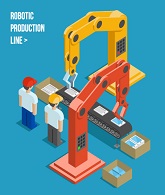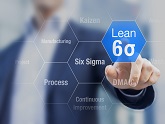“Hospitals are more like battlefields than Toyota production lines”. I wrote that years ago in response to a Lean consultant who had challenged the need for discrete event simulation in health care. Simply put, I said, health care systems are more complex, variable, and interdependent than anything encountered in modern manufacturing systems. Thus, why should we merely copy the same manufacturing improvement methodologies to this very different environment? More to the point, why not deploy different analytical tools and methods more appropriate to the far more complex world of health care? While we have certainly made some strides in improving health care processes using traditional manufacturing approaches, we clearly have a very long way to go. For instance, a recent meta-analysis of manufacturing-based improvement efforts of some 47 Emergency Departments shows only trivial performance improvements after two years of effort and expense, with some showing no improvement at all. Thus, as I have stated for years, traditional manufacturing approaches need additional tools and different approaches in health care if it is to successfully evolve.
Responding to Growing Complexity with Health Care Simulation – It’s Time to Take Down the Sticky Notes
Seasonal demand challenges have an effect on production planning throughout the year. I live in Pittsburgh where we have hot summers and harsh, cold winters. In May of this year, when the weather was turning warmer for summer, I became an avid runner. I needed some new gear to support this hobby, and headed to my local athletic store where the shelves were stocked with expensive clothes guaranteed to ‘keep you cool’ on the hottest summer days. Now, in December, the days are getting shorter and the weather is getting colder. I’ve had to turn back to the athletic store where I found the shelves are stocked with expensive clothes guaranteed to ‘keep me warm.’
As exciting as a new release can be, it can also leave you wondering, "what exactly does this mean for me?"
Three years ago we embarked on a new journey with Arena that has led to 10 new releases and updates. Version 15 is the 11th and most comprehensive. What’s new about this journey? New leadership, a new product management team, and focus on product development. Our focus on product development includes 4 drivers:
THE INDUSTRY
The mining of minerals and coal have been cyclic industries for over a century with global periods of boom and bust following each other. In the last decade, or so, the emergence of China and India’s economies and the related expansion of heavy industry produced unprecedented demand for iron ore, coal and copper. In this environment Australia, Brazil and other countries to a smaller extent undertook to expand their capacity to export product to service this growing demand.
Topics: Mining, Port & Terminal, Supply Chain
The Challenge
Designing the most cost effective integrated solution that provides a robust system capable of delivering budget tonnages.
Topics: Logistics, Mining, Port & Terminal, Supply Chain
Manufacturing Simulation Reduces Inventories and Order Lead Times
The Challenge
Determine at the planning and evaluation stages that lean manufacturing is the optimal manufacturing method.
Lean is about teams and organizations working together in the continuous pursuit of perfection (even if we never quite get there). Improvement means change, which therefore means risk, as we might try something that doesn’t work (or has side effects). Too many organizations create overly-cautious leaders who make employees afraid to try anything new because they might stumble or fail. Lean gives us mindsets and tools to minimize the risks involved with change while moving progress forward.





.jpg)

.jpg)



